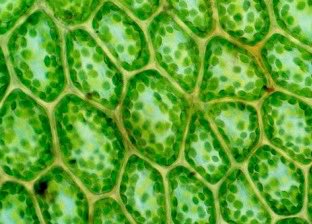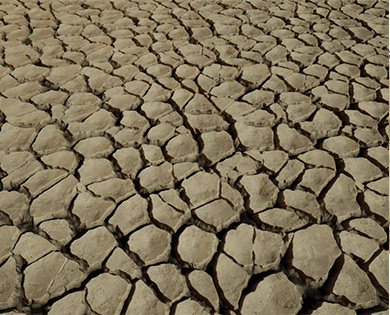What is Voronoi ?
You may have heard of Voronoi noise if you have worked with software like blender or substance painter. It's really good way of making surfaces that look like they have sharp creases enclosing a smooth surface.
Usually used to make hardened lava flows, parched ground as well as more organic looking structures like skin and animal hide, living cells.



In this part we will see how to create a Voronoi pattern in Unity and how to set your own points in the shader itself to create the Voronoi pattern.


We will go over the 'Noise' part of Voronoi noise in Part 2.
The basic element that the Voronoi pattern depends is the 'Distance Field' function.
Take the case where there are 'N' points and we have to find the distance field of those points,
We have to calculate the distance between each pixel and the point closest to it.
This is what we will end up having in this tutorial:
 | |
| Voronoi Pattern Made With Given Points |
Before we get to C# scripting, we will see how to make the shader.
First of all we don't have any properties for this shader.😋. We will have properties in the coming parts.
But we do have a global variable called 'float2 _points[5]' - This can be accessed through C# code.
Let's look the two structs that we have:
float2 _points[5];
struct appdata
{
float4 vertex : POSITION;
float2 uv : TEXCOORD0;
};
struct v2f
{
float2 uv : TEXCOORD0;
float4 vertex : SV_POSITION;
};
Now the vertex shader:
v2f vert (appdata v)
{
v2f o;
o.vertex = UnityObjectToClipPos(v.vertex);
o.uv = v.uv;
return o;
}
fixed4 frag (v2f i) : SV_Target
{
fixed4 col = fixed4(0,0,0,1);
float minDist = 1.0;
float2 coord = i.uv;
for (int i = 0; i < 5; i++)
{
float dist = distance(coord, _points[i]);
minDist = min(minDist, dist);
}
col += minDist;
return col;
}
for (int i = 0; i < 5; i++)
{
float dist = distance(coord, _points[i]);
minDist = min(minDist, dist);
}Then after that we are just adding that as the colour of the pixel.
So we essentially just drew the distance field of those points.
What we have to do now... is that we have to access those points by C# code.
So the Unity API provides us a way to do so, with the Material.SetVectorArray function.
So here is the C# code:
using UnityEngine;
public class VoronoiNoise : MonoBehaviour
{
public Material mat;
public List<Vector2> points;
void Update ()
{
if(points.Count == 5)
mat.SetVectorArray("_points", ConvertToVec4(points));
}
List<Vector4> ConvertToVec4(List<Vector2> vec2)
{
List<Vector4> vec4 = new List<Vector4>();
for (int i = 0; i < vec2.Count; i++)
vec4.Add(new Vector4(vec2[i].x, vec2[i].y, 0, 0));
return vec4;
}
}
Now you can play around with it.. till your heart's content.
If you like programming shaders make sure you check these out : Shader Tutorials
Support Bitshift Programmer by leaving a like on Bitshift Programmer Facebook Page and be updated as soon as there is a new blog post.
If you have any questions that you might have about shaders or unity development in general don't be shy and leave a message on my facebook page or down in the comments.